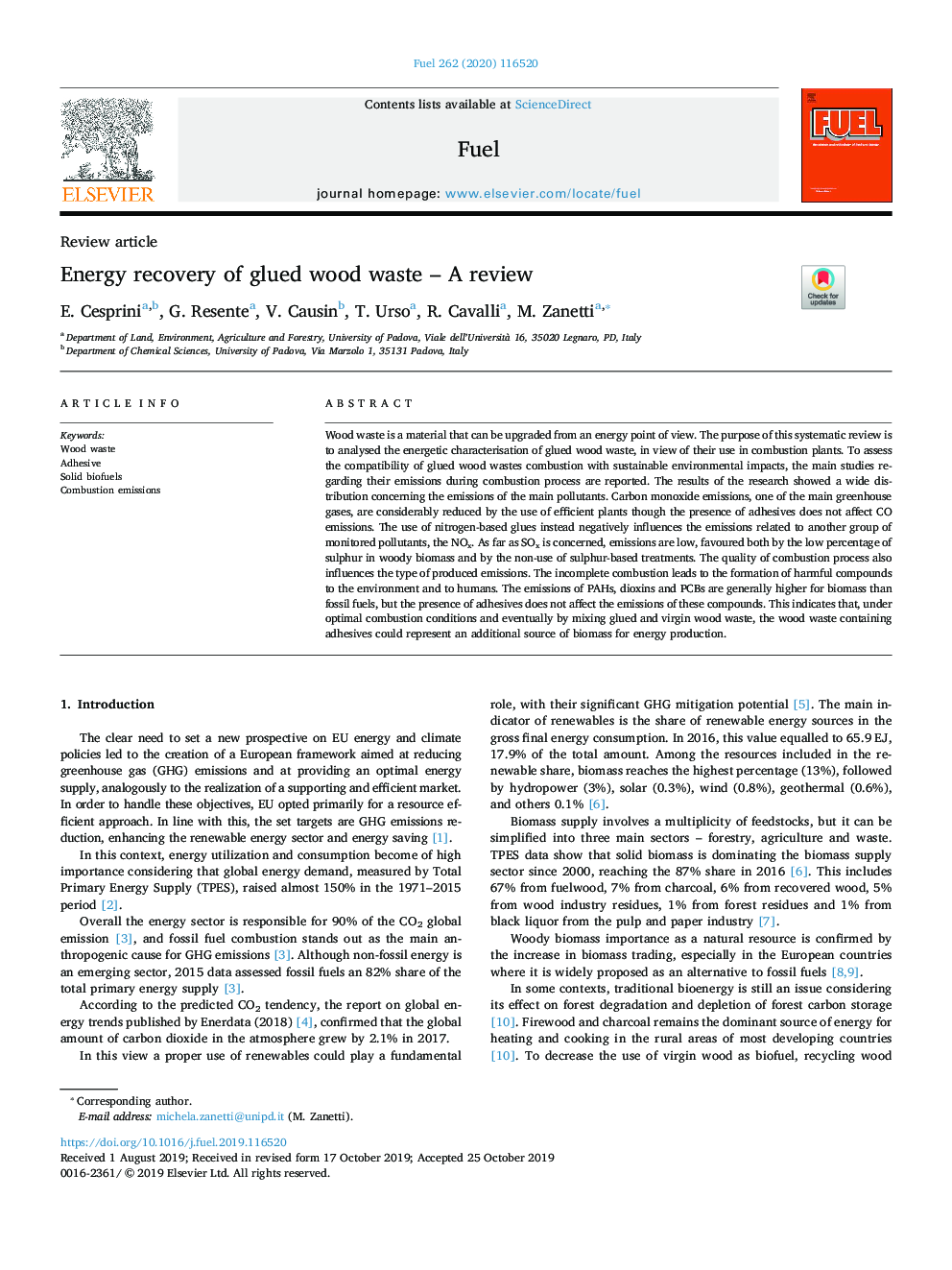| Article ID | Journal | Published Year | Pages | File Type |
|---|---|---|---|---|
| 13415938 | Fuel | 2020 | 12 Pages |
Abstract
Wood waste is a material that can be upgraded from an energy point of view. The purpose of this systematic review is to analysed the energetic characterisation of glued wood waste, in view of their use in combustion plants. To assess the compatibility of glued wood wastes combustion with sustainable environmental impacts, the main studies regarding their emissions during combustion process are reported. The results of the research showed a wide distribution concerning the emissions of the main pollutants. Carbon monoxide emissions, one of the main greenhouse gases, are considerably reduced by the use of efficient plants though the presence of adhesives does not affect CO emissions. The use of nitrogen-based glues instead negatively influences the emissions related to another group of monitored pollutants, the NOx. As far as SOx is concerned, emissions are low, favoured both by the low percentage of sulphur in woody biomass and by the non-use of sulphur-based treatments. The quality of combustion process also influences the type of produced emissions. The incomplete combustion leads to the formation of harmful compounds to the environment and to humans. The emissions of PAHs, dioxins and PCBs are generally higher for biomass than fossil fuels, but the presence of adhesives does not affect the emissions of these compounds. This indicates that, under optimal combustion conditions and eventually by mixing glued and virgin wood waste, the wood waste containing adhesives could represent an additional source of biomass for energy production.
Related Topics
Physical Sciences and Engineering
Chemical Engineering
Chemical Engineering (General)
Authors
E. Cesprini, G. Resente, V. Causin, T. Urso, R. Cavalli, M. Zanetti,
